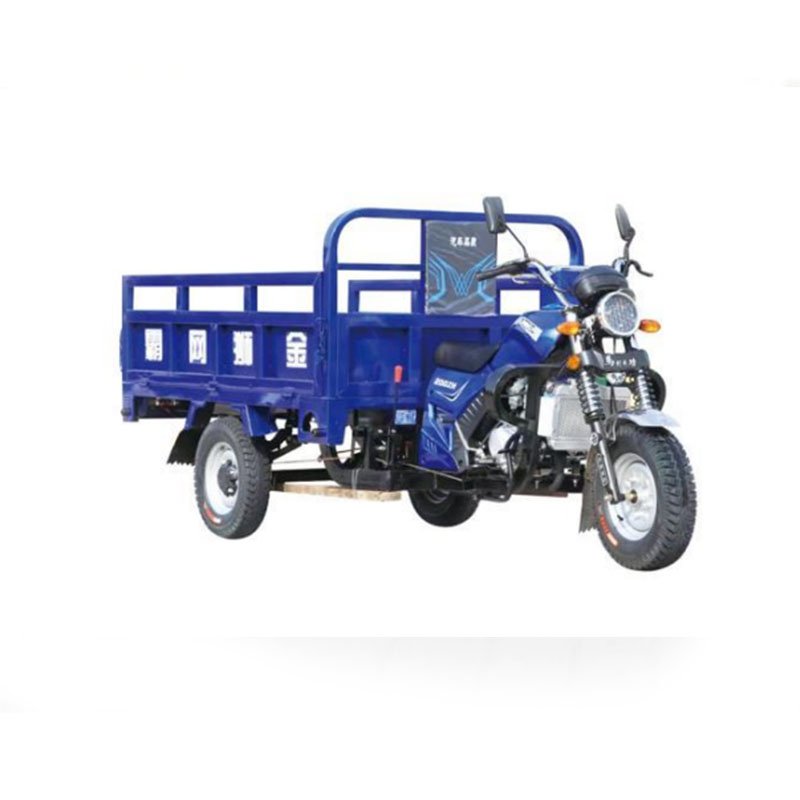
On the predawn breakfast street, the engine roar of fuel-powered three-wheeled cargo motorcycles awakens the sleeping city. Uncle Zhao, who sells steamed buns, skillfully stacks bamboo steamers into the cargo box. White steam drifts through the gaps in the truck bed to the street corner. On this “old partner” that has served him for three years, the iron frame still bears the frost marks from hauling flour one winter solstice dawn. By the time the aroma of the first steamer of buns fills the streets, the fuel-powered three-wheeled cargo motorcycle is already shuttling along the breakfast delivery route, making every steamy morning feel tangibly warm.
At the edge of the Gobi pasture in Northwest China, fuel-powered three-wheeled cargo motorcycles serve as the unspoken “timekeepers” for herders. Every day before moving her flock, herder Ayixiamu loads woven bags full of salt bricks and forage into the truck bed. As the vehicle jostles over gravel roads, the copper bells in the cargo box tinkle softly—a “progress bar” for her savings to buy a learning machine for her youngest son. This partner, steady on grassland paths, turns dozens of kilometers of migration routes into less lonely journeys, transforming every handful of forage into a solemn promise to life.
In the courier distribution hubs of urban villages, fuel-powered three-wheeled cargo motorcycles form the busiest “capillaries.” The truck bed of courier Xiao Lin always piles up like a small mountain: pink children’s toy boxes, silver rice cooker packaging, and bubble-wrapped glass vases all await delivery to different windows in the morning light. In narrow alleyways, where large trucks cannot turn, these motorcycles have their “highlight moments”—always delivering anticipated packages to apartment buildings before residents go to work, making every receipt message a testament to trust in these “alley knights.”
Outside the suburban flower market, fuel-powered three-wheeled cargo motorcycles become mobile spring stations. In flower farmer Sister Chen’s truck bed, pothos vines hang over the side panels, and phalaenopsis buds quiver in the morning dew. She visits five flower shops daily, the flower pots in her cargo box swaying to the engine’s rhythm like the harvest dances she used to perform in her village. This mud-stained partner ensures dewy flowers bloom before the morning market, turning every blooming petal into a poetic accent in the city.
In the empty alleys after night markets close, fuel-powered three-wheeled cargo motorcycles become “gentle harbors” for weary bodies. Brother Liu, who sells skewered barbecue, folds up his portable table into the truck bed as iron skewers clink crisply in an empty bucket. This vehicle, which carried mutton during the day, now serves as a “private car” for him and his wife to return home. The headlight illuminates the path, while the residual heat from the grill in the cargo box reflects the sweat on their brows—they know this silent partner is quietly carrying their rent, their child’s tuition, and every small wish for the future.
Fuel-powered three-wheeled cargo motorcycles are never protagonists in grand narratives, yet amid the creases of urban hustle and the textures of mountains and fields, they become footnotes to millions of lives through loaded cargo and steady tire tracks. They are the first wisps of steam from breakfast stalls, the jingle of bells on pasture roads, the timely arrival notices on courier slips, and the patch of spring by flower shop doors. Choosing one means choosing to set out with hope every time, allowing every ordinary effort to roll toward a more promising horizon on the转动 (rotation) of wheels.
